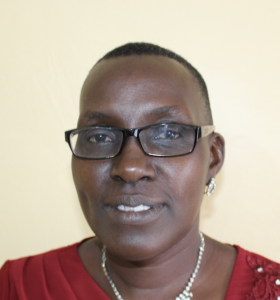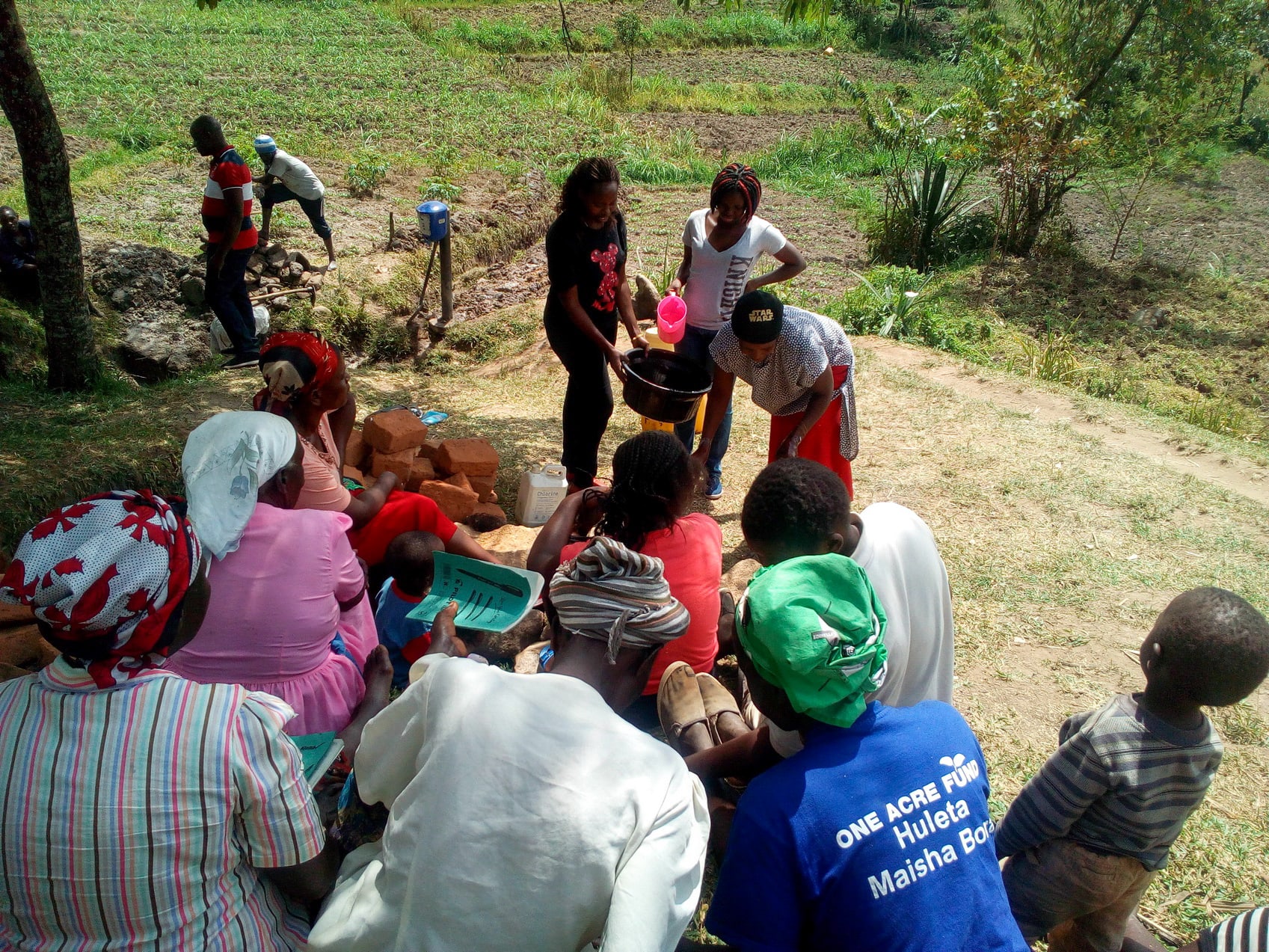"It has been our desire as a community to have our spring protected so that we can have access to clean and safe drinking water," Mr. Kevin Temba said to us.
He contacted us about protecting Udi Spring after seeing our protection of nearby Indiatsi Spring. He visited a friend who lives by the spring and was impressed with the work.
People gather water from this source through a plastic pipe which they improvised. It was made to relieve the problems with scooping water from the source. But it did not alleviate the problem entirely because it is still open to contamination by nearby farms and animals.
They store water at home in 100-liter plastic containers and or leave it in the jerrycans they use to fetch water from the spring. The community members use the water for domestic chores such as; cleaning, drinking, cooking, irrigating their farms during dry seasons, water for their animals and for brick-making.
Community members using water from this unprotected source are vulnerable to waterborne diseases. This is attributed to the fact that, the spring is located to proximate farming, where most people go to wash and also take their animals to drink water.
We met Mr. Udi, who the spring is named after. He complained of his family repeatedly suffering from typhoid.
"I spent a lot of money on medication on my son who suffered from typhoid for a very long period of time - money which I could otherwise have invested in my brick making business," he said.
His case is just an example of the many challenges faced by this community created by the lack of access to safe water.
Sanitation facilities such as pit latrines, dish rack, and clotheslines are rare in the community. The latrines that exist are generally in poor condition. This, therefore, means that the people relieve themselves in the bushes, thus endangering their own lives because the sanitation state in the area is poor.
Most adults spend their day farming maize, vegetables, banana, beans, and sugarcane. Some parent can afford to make bricks that are then sold in nearby Kakamega Town where construction is constant and there is a need for bricks.
Here’s what we plan to do about it:
Training
Community members will attend hygiene and sanitation training to give them a chance to learn about healthy practices and their importance. The facilitator plans to use PHAST (Participatory Hygiene and Sanitation Transformation), CLTS (Community-Led Total Sanitation), ABCD (Asset-Based Community Development), group discussions, handouts, and demonstrations at the spring. One of the most important topics we plan to cover is the handling, storage, and treatment of water. Having a clean water source will be extremely helpful, but it is useless if water gets contaminated by the time it’s consumed.
Handwashing will also be a big topic. And since open defecation was encountered here, this is at the top of our list of things to address. Waste always needs to be disposed of properly, or else it will be spread by flies or rainwater.
Training will also result in the formation of a committee that will oversee operations and maintenance at the spring. They will enforce proper behavior around the spring and delegate tasks that will help preserve the site, such as building a fence and digging proper drainage.
Training will inform the committee and the rest of the community about what they need to contribute to make this project a success. They must mobilize locally available materials, such as bricks, clean sand, hardcore, and ballast. All community members must work together to make sure that accommodations and food are always provided for the work teams.
Sanitation Platforms
On the final day of training, participants will select five families that should benefit from new latrine floors. The five families must prepare by sinking a pit for the sanitation platforms to be placed over.
Spring Protection
Our artisans will protect the spring and ensure that the water is safe, adequate and secure. Construction will keep surface runoff and other contaminants out of the water.
Fetching water is predominantly a female role, done by both women and young girls. Protecting the spring and offering training and support will, therefore, help empower female community members by giving them more time and efforts to engage and invest in income-generating activities.

 Protected Spring
Protected Spring
 Rehabilitation Project
Rehabilitation Project





































